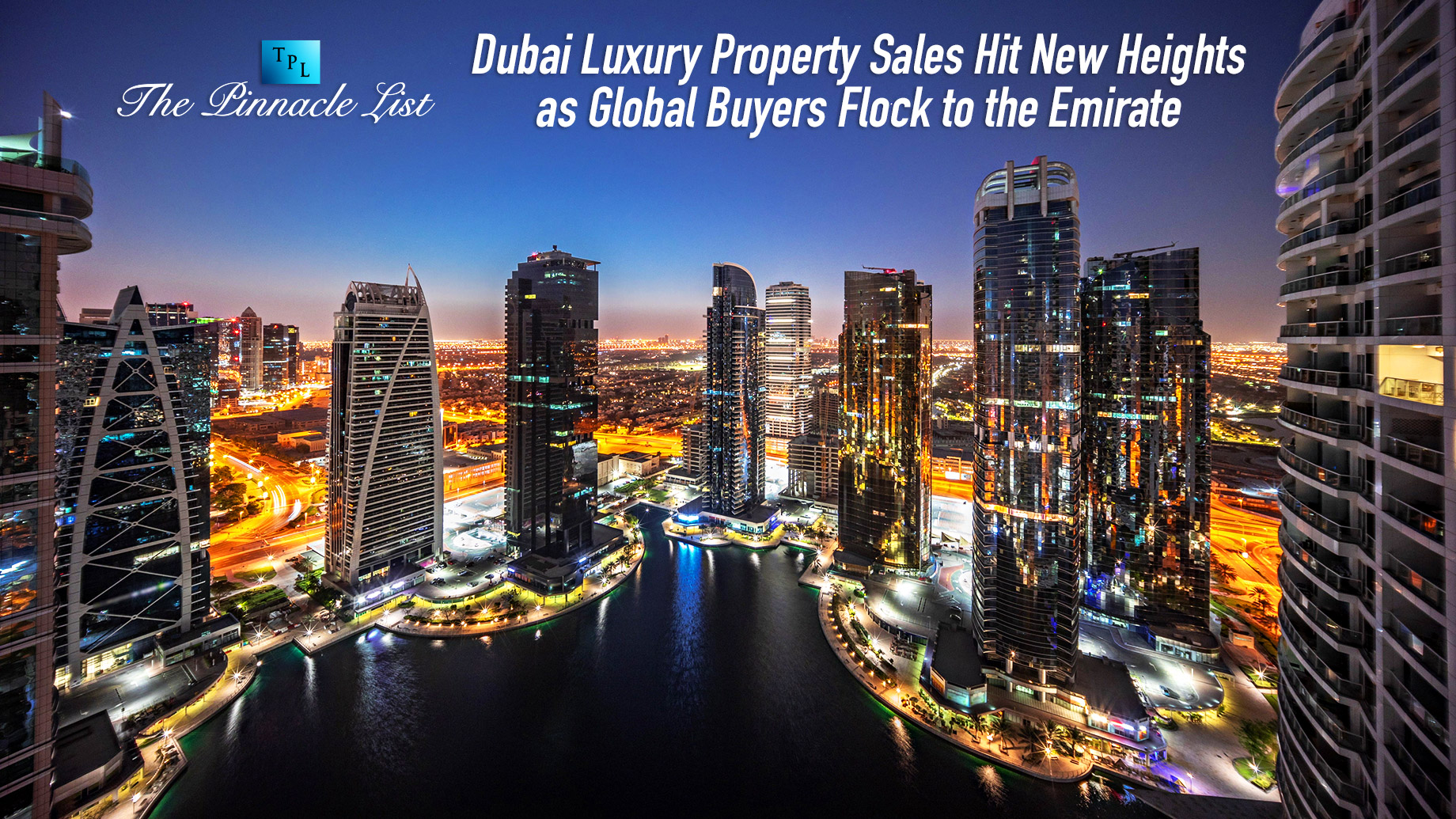
Dubai’s high-end residential real estate market has consolidated its position at the apex of global luxury in the second quarter of 2025, combining surging demand, robust fundamentals, and unmatched international appeal.
According to data from the Knight Frank 2025 Wealth Report, sales of homes valued at over $10 million reached an astonishing $2.6 billion between April and June. This 37% quarterly jump, and the staggering 63% increase from a year earlier, put Dubai firmly in the lead among global ultra-prime real estate hubs.
New Wave of Wealth Migration Reshaping the City
Beyond the numbers, the real story is the transformation of Dubai’s luxury homebuyer population. The city has rapidly become a preferred destination for high-net-worth individuals from Europe, India, Russia, the US, and China. Drawn by political stability, world-class amenities, and a favourable tax regime, these new residents now anchor demand for the most exclusive addresses on the Palm Jumeirah, Emirates Hills, and Downtown.
Dubai’s luxury market today is characterized by end-user, cash buyers seeking primary or secondary residences—in marked contrast to the speculative cycles that once defined this space. With the city’s Golden Visa residency program in full force, Dubai’s global appeal only continues to rise.
Key Highlights
- $10M+ Sales Surge: Between April and June, sales of homes priced above $10 million reached $2.6 billion.
- Unmatched Price Growth: Prime property values in Dubai climbed nearly 17% year-over-year, the highest among all major global hubs.
- Demand Drivers include:
- Security, stability, and lifestyle credentials
- Tax-free personal income
- Modern infrastructure and government investment
- Residency incentives for property investors
Leading the World—By the Numbers
The city’s relentless surge can be seen in the numbers:
| City | $10M+ Sales Q2 2025 | Prime Price Growth | Supply Liquidity | Leading Buyer Nationalities |
|---|---|---|---|---|
| Dubai | $2.6B | +16.9% | Limited | UK, India, Russia, US, GCC |
| New York | $1.8B (est.) | +3.0% | Moderate | US, China, UK, Brazil |
| London | $1.2B (est.) | +2.1% | Growing | UK, US, Middle East |
| Monaco | ~$600M (est.) | +4.0% | Very limited | Switzerland, France, Russia |
These figures reflect not just the magnitude of deals, but also a fundamental change in buyer behaviour. Dubai isn’t just setting records—it’s recasting the playbook for luxury real estate globally.
Behind the Numbers: What’s Really Selling
Top-performing segments in Dubai’s ultra-prime market include new-build penthouses, branded residences by international hospitality names, and waterfront villas in the most prestigious enclaves. Today’s luxury buyers are not merely chasing status—they demand privacy, wellness amenities, smart-home integration, and seamless access to both city and beach.
Most Sought-After Features:
- Private wellness facilities (gyms, spas, pools)
- Expansive outdoor terraces with skyline or waterfront views
- Enhanced security for privacy and peace of mind
- Dedicated staff quarters and concierge-level services
Why Dubai Continues to Outperform
Dubai’s momentum is firmly rooted in government-led infrastructure development, business-friendly regulation, and a long-term urban strategy to attract and retain global capital. Analysts agree that rising interest rates and global economic turbulence have done nothing to cool appetite for the emirate’s elite housing stock.
Industry voices also attribute continued growth to the limited trophy inventory in the city’s most sought-after districts, which is keeping both prices and competition high. The transformation of Dubai into a true resident city—as opposed to a transient market for speculative investors—has created a solid foundation for future growth.
Outlook: Sustainable Strength
Looking ahead, with new regulations restricting overdevelopment and a focus on sustainable luxury, Dubai appears set to maintain its lead among global luxury residential markets. Industry observers expect continued price gains for prime properties, supported by both local and international demand, and possibly further diversification in architectural innovation and green building practices.
